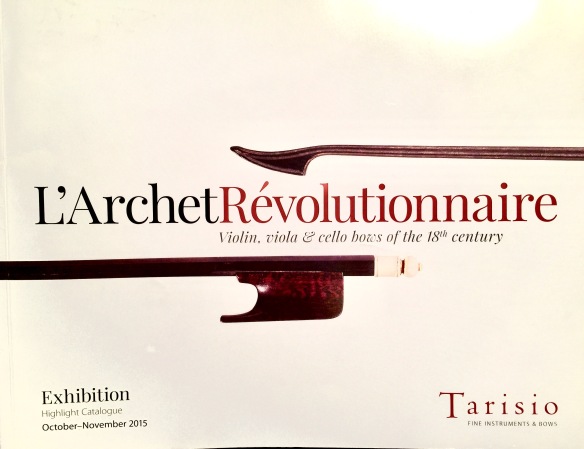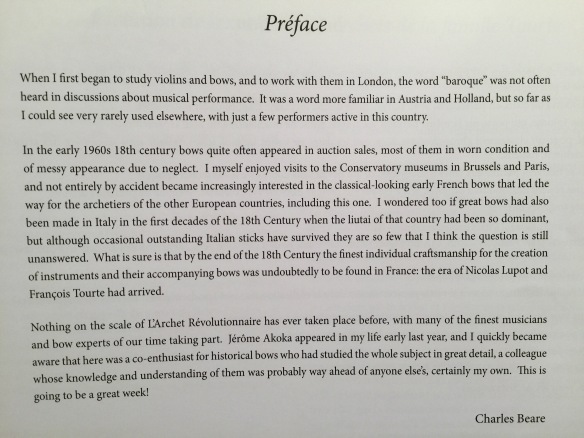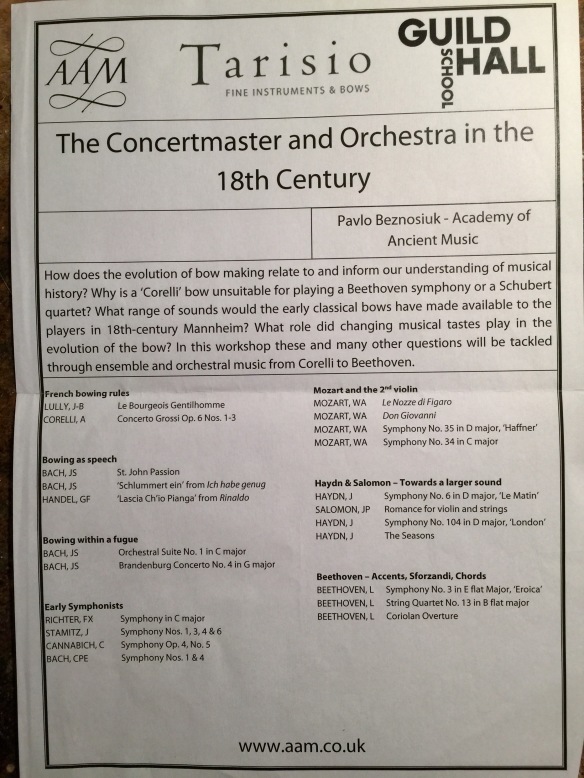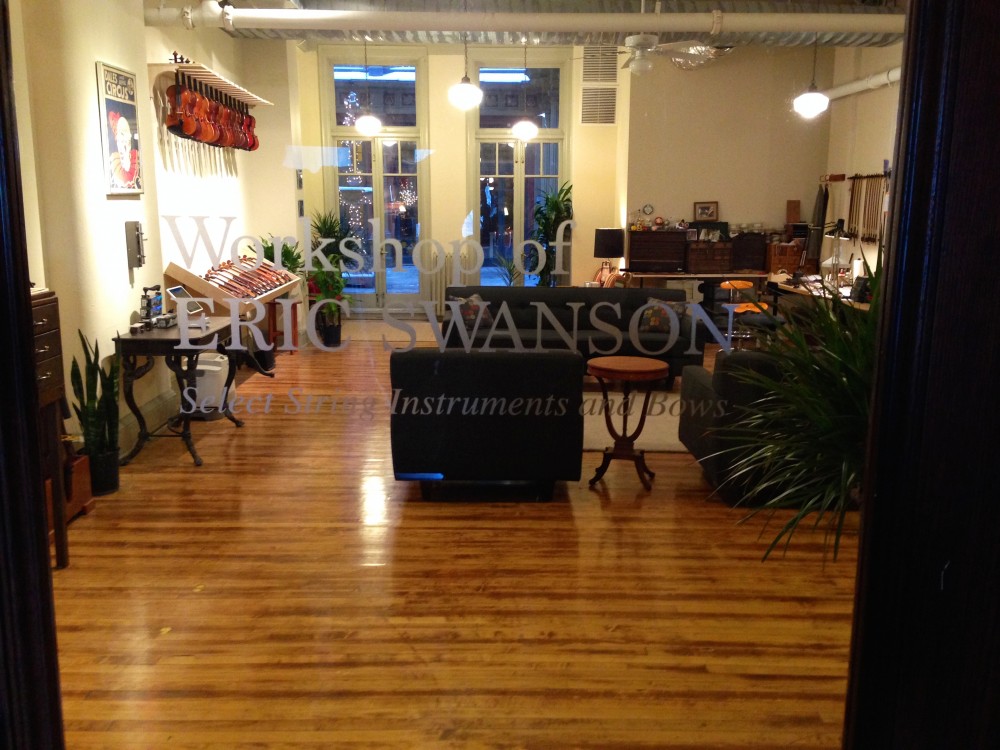
In Fall of 2015 I flew to London to learn more about the evolution of the bow by attending a week-long series of lectures, performances and masterclasses sponsored by Tarisio called, “L’Archet Revolutionnaire”. Following the series an exhibition of baroque and transitional bows of all kinds by some of the world’s most famous makers was hosted at the Tarisio offices. At the time I did post some videos on my shop’s Facebook page, but I never did get around to writing anything coherent on the matter. The fact is that is was a unique event because it combined issues of playability and function with historical information as well as concepts of construction. This union of form and function, informed by political, artistic, as well as economic history is sorely lacking in our field, especially in the US. So this is my optimistic take on the program. My cynical take? A way to boost the value of baroque and transitional bows, which currently are underappreciated and underpriced, timed to coincide with the Fall violin auction season in London…

An exhibition highlight catalog was published and a two-volume book set was sold including pictures of all the bows as well as some very interesting essays. Some of these essays were later published on the Tarisio site. I will include links to these at the end of this post.
I took some videos as I mentioned, but I also jotted down a series of very interesting notes over the week that I just re-discovered, which I will post below. They are raw, but worth reading! I hope you enjoy them:
Lully – regimented bowing. Heavily drilled and uniform
Corelli – looser bowing technique, less focus on actual bowing, but on sound. Long sustained sounds, difficult on bows of the time.
Bach – bowing is speech. Making words, not bowings.
Tourte family bows hug the string. Stay on the string and wrap around it. This era of bow is less articulate than preceding styles, but louder and broader musical vocabulary.
Idea that one could recognize text purely from the bowing(!). The text, then, creates the feeling of the music. The music duplicates speech.
Early symphonies – a more driving sound but with parts of baroque-like articulation. (Richter, Stamitz)
More strokes for the top third of the bow
Cramer bow would have been played with the stick totally straight. Lots of tension.
Larger sound – Salomon & Haydn – the bow more as a sound producing machine. More
volume. The drama is more inside the sound.
Beethoven – emphasizes rather “violent” strokes/accents on the bow. Invention of the ferrule, without which the hair near the frog is much more unstable and doesn’t speak as quickly.
Music developing from imitating the spoken word to more of a singing voice.
Leopold Mozart refers to the art of rhetoric when he writes about learning to play violin. He doesn’t explain this, but refers to the world of academia at the time. The rules of giving a speech (apparently quite specific and regimented), were clearly set down and he expected that these were widely known.
Cramer style bows, circa 1760s
Leonard Tourte Cramer style bow, Paris ca. 1775
Mannheim Orchestra would have used these types of bows. Mozart knew this orchestra and composed for them.
Need for heavier, higher tip. Italian style had these qualities. More power, semi quavers. Cramer was first evolution from earlier style baroque bows with small, low heads.
Cramer became obsolete in France, but continued to be popular for decades in Germany, with variations.
When bows got longer, teachers began to speak more about the fingers. Leopold Mozart, with shorter bows, writes only about the wrist.
The longer stick speaks more to the “authority of the individual”, especially in post revolution France.
In discussing the four main types of bow holds in use during the 18th century, there is a concept of trying to develop a more universal set of rules in this era, where the different styles of playing and holding the bow come together into some kind of more modern “school” which takes from the best attributes of its predecessors but creates something new. The desire was to improve performance more so than creating uniformity. Leopold Mozart complains about the quality of violins in his era and encourages mathematicians or other experts to find better principles with which to construct superior instruments.
There is no real focus on the art of public speech in the modern era. Things are heard in short clips etc., but very few modern examples of “rhetorical moments”. The idea of listening to classic speeches as way of improving ones playing. In order to move an audience, you must move yourself.
Metallic strings require more hair in order to play
Idea that Tourte bows were not meant to be used with springing strokes and have been recambered later accommodate modern playing styles. The stick was meant to be straight. Springing strokes were associated with outdated Cramer bows and that style was out of fashion by the time of FX Tourte.
Idea: since violin and bow makers seek to always test musicians or use them for testing, musicians should test bow makers & experts. Have a table of bows that have been rated by a group of professional musicians and see if the “experts” can choose the best bows, using any method other than playing.

List of interesting articles associated with the Exhibition:
https://tarisio.com/archet-revolutionnaire/historical-introduction/
https://tarisio.com/archet-revolutionnaire/kai-koepp-french-or-german-bows-for-beethoven/
https://tarisio.com/archet-revolutionnaire/parisian-bow-makers-bernard-gaudfroy/
The shop’s Facebook page:
https://www.facebook.com/Workshop-of-Eric-Swanson-695438740547547/
